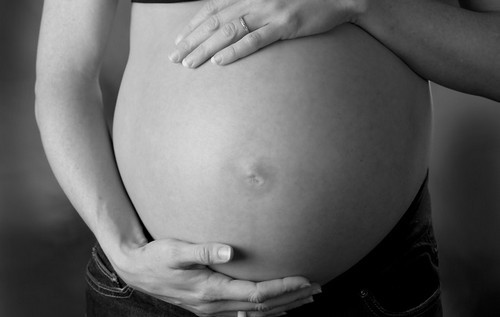Not always the happy waiting time for the baby passes cloudlessly, sometimes the expectant mother has to deal with certain problems already at the 12th week of pregnancy.
One of the possible complications is placenta previa, that is, its incorrect attachment to the uterine wall. Ideally, the place for fixing the placenta should be the highest point of the uterus, far from the entrance to it. Incorrect is considered to be the attachment of the placenta to the lower part of the uterus, to its neck.
Doctors present antenatal clinics in 0.2-0.9 percent of pregnancy cases, but with constant monitoring of the woman and the fetus, which implies observation and necessary treatment, it is possible to avoid deterioration of the situation and irreparable consequences.
The placenta previa is diagnosed more often from 12 to 20 weeks of pregnancy, but in most cases in the third trimester the position of this important reproductive appendage is normalized. The earlier a woman registers with a gynecologist, the more likely she is to hear about presentation, since in the early stages (12 weeks) this phenomenon occurs from 20 to 30 percent of all pregnancies.
The possible reasons leading to presentation can be many:
- changes in the endometrium due to cesarean section, other operations and studies, during which there was a mechanical effect on the uterus;
- presentation in a previous pregnancy;
- multiple pregnancy;
- a large number of previous births;
- the growth of the placenta due to a lack of oxygen in the body of a woman;
- bad habits of the pregnant woman, for example, attachment to nicotine;
- late pregnancy – from 35 years old;
- accommodation in highlands.
It is not possible to establish for certain the cause of presentation in most cases of this anomaly. But most often this complication manifests itself in the period from 12 to 20 weeks of pregnancy in women who have experienced earlier abortion, inflammation in the uterus. At risk are patients who have a scar or myomectomy on the uterine wall, when the placenta grows in the direction of intact tissue.

What could be the complication
The following types of placenta previa are found:
- central – complete;
- partial – incomplete;
- low;
- cervical.

Incomplete placenta previa is also divided into subspecies:
- lateral – the placenta passes from the posterior wall to the anterior and overlaps the pharynx of the uterus by 2/3;
- regional – the lower edge of the placenta overlaps only 1/3 of the uterus.
Full placenta previa implies that the internal pharynx, i.e. the entrance to the uterus is completely blocked. With partial placenta previa, only in part does the inner part of the entrance overlap, next to which the fetal membranes are visualized. Complete presentation is less common, it is with him that the placenta completely overlaps the inside of the uterine pharynx. Incomplete presentation, and, first of all, marginal presentation, is not an absolute obstacle to natural childbirth, since it does not completely block the entrance to the uterus, and the baby can leave it on her own.
Low placenta is considered in case of concentration of its lower edge below 6 centimeters from the pharynx. But in practice, the low position of the placenta comes in the case when its lower edge is located two centimeters from the pharynx along the inner wall of the uterus. Very rarely, the placenta can begin to develop in the area of the uterine isthmus or canal, and then the cervical placenta will be diagnosed.
Any type of placenta previa is most often found in the early stages of pregnancy, usually at 12 weeks. At this time, the placenta is called in the scientific language chorion. But partial presentation is formed only closer to childbirth, along with the expansion and disclosure of the cervix. After 20 weeks, in most cases, the placenta rises, and by the ninth month of pregnancy returns to normal in more than 90 percent of cases. At the same time, the placenta takes its normal position faster and more often if it is located not on the back, but on the front wall.
Symptoms, diagnosis and consequences of presentation development
In most cases, the presentation does not give itself outwardly, but you need to know the symptoms of the complication and, in case of their manifestation, immediately go to the doctor to prescribe treatment. The main and most important among the symptoms is a sudden start of vaginal bleeding, even if it is not accompanied by pain and also suddenly stops, as it began. In addition to the appearance of blood, uterine contractions may appear, and sometimes even abdominal pain similar to contractions. Most often, such symptoms appear at the 20th week of pregnancy and later, in its second half, but bleeding can occur at 12 weeks, and even earlier. The allocation of blood threatens to miscarriage, so you need to respond quickly.

As a rule, placenta previa is detected at 12 weeks, when a woman first goes for an ultrasound scan. To avoid the terrible consequences of placenta previa, it is important to diagnose it in a timely manner and put the situation under medical control. The main diagnostic method is ultrasound examination, and the most reliable results are given by vaginal examination with a special sensor. More erroneous is the examination carried out along the abdominal wall. Doctors also conduct a digital examination, but this method alone is dangerous for an easily vulnerable placenta, because can provoke her detachment and bleeding.
Only about 20 percent of pregnant women with presentation do not have symptoms of complications and do not experience bleeding. The severity of symptoms can be of varying degrees – from mild to very strong, but in any case, its manifestation indicates a problem. The placenta, which provides the child with everything necessary, is thinned, tears, villi exfoliate, detachments form, which worsens the nutrition of the appendage and the baby himself.
Thus, presentation can threaten the following:
- blood loss and shock of a woman;
- hypoxia of the child;
- placental abruption and premature birth;
- postpartum uterine inflammation;
- congenital malformations of the newborn, low weight, jaundice, respiratory failure and other developmental abnormalities;
- death of a baby or woman in childbirth during childbirth.
Pregnancy Control and Delivery Options
Considering how severe the consequences of placenta previa can be, throughout the pregnancy a woman needs constant and sensitive monitoring – medical supervision and treatment, up to delivery. The frequency of visits to the gynecologist will depend on the gestational age, unless, of course, nothing bothers you. In general, the observation in the antenatal clinic does not differ in planning from an ordinary pregnancy:
- from 12 to 20 weeks – once a month;
- starting from the second trimester, after 20 weeks – twice a month.
The complexity of the situation will depend to a certain extent on whether placental presentation is observed along the posterior or anterior wall of the uterus. Pregnancy monitoring will consist of a continuous examination of the placenta, assessment of bleeding and the general condition of the woman and the fetus, which is carried out by:
- Ultrasound – it is with the help of it that the attachment of the placenta to the anterior or posterior wall of the uterus and the presence of previa are established
- inspection by mirrors;
- assessment of the results of general tests of the pregnant woman.
Presentation treatment implies, if necessary, the following measures:
- blood transfusions to women in small doses;
- taking antispasmodic and tocolytic drugs;
- the appointment of hormonal drugs to normalize uterine-placental bleeding, increase blood coagulation and strengthen the vascular walls;
- the use of sedatives: motherwort, valerian and others;
- prevention of endometritis and fetal hypoxia.

The most dangerous period of pregnancy is its first trimester, which lasts up to 12 weeks, but when placenta previa is important, it is important not to lose increased vigilance further. When the presentation is detected at 20 weeks and up to two months after, with proper monitoring, necessary care and following medical instructions, it is highly likely that the placenta will occupy the normal location on the uterine wall. If something goes wrong, bleeding opens, then you need to immediately call an ambulance. In the event of repeated bleeding, constant medical supervision within the walls of the hospital, up to the very birth, becomes necessary. This is the only way to avoid severe blood loss, placental abruption and all the consequences arising from this.
If the placenta previa remains until the 36th week, then the doctor will decide on hospitalization and delivery. Thus, a presentation of 38-39 weeks is an indication for cesarean section. Conventional childbirth in complex cases is not only contraindicated, but also fraught with complications. Complete central placenta previa after 20 weeks and at a later date is a 100% indicator for elective caesarean section, because the baby will not be able to leave the uterus naturally due to the placenta obstructing its entrance. The higher the risks and the greater the bleeding, the more urgently the operation is prescribed, regardless of the gestational age.
When at home, a woman should strictly follow the doctor’s recommendations to avoid placental abruptions and bleeding. As a rule, no drug treatment guarantees complete healing and migration of the placenta into place, especially if it is fixed on the back wall. Correct or at least not complicate presentation can help bed rest, rich in protein and iron, more fresh air, abstinence from sexual intercourse, from emotional and physical stress, even from gymnastics for pregnant women. Incomplete marginal presentation of the placenta requires additional administration of multivitamin preparations. Lateral and marginal presentation of the placenta, not aggravated by bleeding, can also be treated on an outpatient basis.
Can a placental abnormality be prevented?
You can play it safe in advance, saving yourself from the painful expectations, which usually begin at 12 weeks of gestation and up to 20 weeks – when the placenta falls into place. Prevention of placenta previa will be the correct way of life, in which there is no place for abortion and other interventions that injure the walls of the uterus. To this end, it is necessary to use contraceptives, strictly control reproductive activity. You should also conduct timely prevention and treatment of genital diseases.
Particular vigilance should be shown in the issue of preventing placental abnormalities for women at risk – from the age of 35 years, re-pregnant, already having a similar diagnosis. If there are hormonal disorders, then pregnancy should be planned no earlier than such interferences will be eliminated. But even in the case of a woman’s ideal health, the probability of placenta previa cannot be completely eliminated, since the cause of the anomaly can lie in the features of the fetal egg itself.
In this case, it remains only to trust the doctors, to remain under their vigilant control and, possibly, for a period of 12-20 weeks, before the start of the third trimester, the placenta will take a normal position. In any case, even with regional presentation, you can quite safely give birth independently under the supervision of experienced obstetricians.



